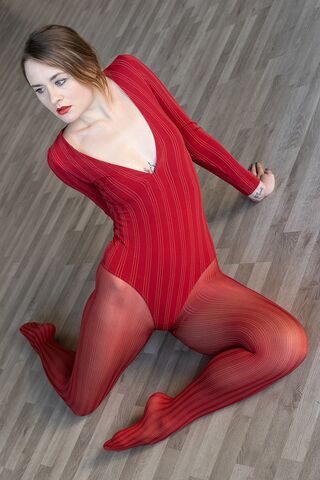Gender
My Body, My Self: Thinness or Muscularity?
Embedded within our culture are clear gender expectations about the body.
Posted January 8, 2022 Reviewed by Vanessa Lancaster
Key points
- Culturally, we believe women should be thin and men should be lean and muscular.
- Both straight and gay men place more emphasis than women on the physical appearance of a potential romantic partner.
- Straight and lesbian women display near equal expectations regarding how they should look to attract a potential romantic partner.
- Straight and gay men do not differ in terms of the body they believed they should have to attract a potential romantic partner.

You might admire the way your body looks, or you might feel disgusted with it. Most of us are not on one extreme end of this wonderful to I-hate-it spectrum, though we might know someone who is.
If you are a self-help professional, the self-revolting type of individual is particularly alarming because you know that such an attitude can lead to dire consequences, including an eating disorder or depression, self-mutilation, and suicidality.
According to the National Eating Disorders Collaboration, body image is what we think, believe, and feel about our body and, in addition, how we perceive others evaluate and judge the way we look. The sum of these aspects influences many aspects of our mental and physical health, how we take care of ourselves, and how we interact with other people. Body image is a critical aspect of our lives, but one we seldom share with others, even though it can easily manifest itself to those who know us best.
However, not all individuals are equally at risk for deficits in their body image or in the same way. After reviewing past research, German psychologist Martin Cordes and colleagues noted that “heterosexual women and homosexual men seem to be more vulnerable to a negative body image than homosexual women and heterosexual men.”
One reason may be that both straight women and gay men try to attract male sexual and/or romantic partners. They are keenly aware that men, in general, tend to place paramount importance on potential partners' physical attractiveness.
To study the complexity of body image preference, they assessed the perceptions and expectations of straight and gay women and men toward their own bodies and that of a potential romantic partner. In particular, they questioned the priorities given for the partner in terms of relative thinness and muscularity and the relationship of these to eating pathology.
Their overriding conclusion will not surprise you: "Homosexual and heterosexual men and women share relatively comparable standards of beauty in terms of their own appearance and the appearance of a potential romantic partner" that reflect the common norms of beauty ideals in Western societies. Women should be thin, and men should be lean and muscular.
Consistent with these beauty standards, they found that feeling fat was more damaging for one’s body image than not feeling muscular enough.
Additionally, the authors found both unique and overlapping views of various gender and sexual orientation groups:
- Straight women placed less importance on the physical appearance of their partners than did men.
- Straight women and lesbians in most domains did not differ from each other. For example, they displayed near equal expectations regarding how they should look to attract a potential romantic partner.
- Straight women and gay men shared similar standards regarding their own and a potential partner’s physical appearance. Still, gay men were slightly more likely to prefer their men muscular and strive for thinness for themselves.
- Straight men overestimated the degree of muscularity that women supposedly find attractive, and they had the lowest levels of eating disorders.
- Straight men and lesbians did not differ in their preference for the body fat of a potential romantic partner.
- Straight men and gay men did not differ in terms of the body they believed they should have to attract a potential romantic partner.
- Lesbians and gay men adopted socio-cultural and heteronormative beauty ideals for themselves, but lesbians were less likely to apply those ideals of appearance-related preferences to a potential partner.
Gay men applied the same thinness and muscularity beauty ideal standards to themselves as they did to a potential romantic partner.
My Take
I’m not overly optimistic that these deeply embedded cultural gender ideals for the self and one’s romantic partner will disappear any time soon. I’m not even sure that younger generations have sufficiently modified these attitudes to give me hope for gender parity in the near future.
Thus, I fear that body image issues will plague the Zoomer and Alpha generations, as they have previous generations. As for “selecting” a romantic partner, I hope youth can be convinced of the superficiality of the initial physical appearance that hooks them.
Those looks will inevitably wear thin; rather, it is more adaptative to look beyond the external to the internal—at least if there is any hope for mental health and romantic relationship longevity.
References
National Eating Disorders Collaboration: https://nedc.com.au/eating-disorders/eating-disorders-explained/body-im…
Cordes, M., Vocks, S., & Hartmann, A.S. (2021). Appearance-related partner preferences and body image in a German sample of homosexual and heterosexual women and men. Archives of Sexual Behavior, 50, 3575–3586 doi:10.1007/s10508-021-02087-5


